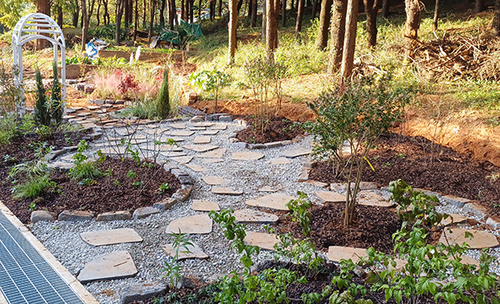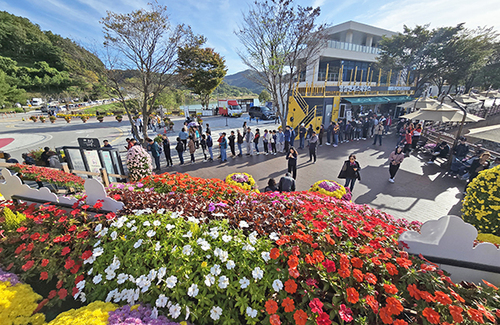| ▲ 전북연구원이 10일 '전북의 14개 시ㆍ군별 인구이동 특성과 대응 방안'이라는 제목의 이슈 브리핑을 발간한 가운데 인구이동 특징을 살펴보면 2020년 전북에서 수도권으로 순유출한 7,172명 가운데 ▲ 전주 ▲ 군산 ▲ 익산 등 3개 시(市) 순유출이 총 5,912명으로 도내 전체의 82.4%를 차지했다. / 도표제공 = 전북도청 © 김현종 기자 |
|
| ▲ 부안군은 순유출 337명ㆍ전출 2,164명 가운데 수도권(53.7%)ㆍ충청권(16.7%) 비율이 높았고 전출사유는 직업이 39.9%를 차지했으며 연령대는 20대(36.3%)가 가장 높았고 수도권 전출 비율은 감소했지만 오히려 충청권 전출 비율이 증가한 것으로 나타났다. © 김현종 기자 |
|
수도권 인구가 비수도권 인구를 추월(2020년 3월)했지만 최근 인구변동요인 추세가 지속될 경우 향후에도 수도권 인구 비중이 높을 것이라는 분석이 나왔다.
또, 사망자수(2020년 307,764명) 역시 출생자수(275,815명)보다 많아 인구의 자연감소가 시작돼 생산 가능인구(15~64세)가 줄면 경제 성장은 지체될 수밖에 없는 인구 오너스(Demographic Onus)의 부정적 효과 본격화 할 것으로 예측됐다.
특히 이동사유별 이동 현황은 '주택'에서 '직업'에 따른 비율이 증가한 것으로 집계됐다.
전북연구원은 10일 '전북의 14개 시ㆍ군별 인구이동 특성과 대응 방안'이라는 제목의 이슈 브리핑을 통해 이 같이 밝혔다.
인구이동 특징을 살펴보면 2020년 전북에서 수도권으로 순유출한 7,172명 가운데 ▲ 전주 ▲ 군산 ▲ 익산 등 3개 시(市) 순유출이 총 5,912명으로 도내 전체의 82.4%를 차지했다.
이에 따라, 전주ㆍ군산ㆍ익산을 중심으로 수도권 전출을 감소시키기 위한 직업과교육 부문의 지역 특화형 인구정책으로 정주인구 전출 최소화를 위한 노력이 중요한 것으로 나타났다.
동부권 지역인 ▲ 진안 ▲ 무주 ▲ 장수는 전출보다 전입이 많거나 유사하기 때문에 사회감소(전입-전출) 대응도 중요하지만, 자연감소(출생-사망) 주 요인인 출산율 제고에 집중해야 할 것으로 분석됐다.
또 ▲ 순창 ▲ 고창 ▲ 남원 ▲ 정읍 등은 광주전남권ㆍ ▲ 장수 ▲ 무주 등은 영남권으로부터 전입이 많은 만큼, 각 시ㆍ군 특성에 따른 권역별 전입인구 확대 역시 전북도 인구정책에 중요한 요인으로 조사됐다.
또한, 최근 ▲ 완주 ▲ 진안 ▲ 무주 등을 중심으로 충청권 인구이동이 증가하고 있는 만큼, 동북부 지역을 중심으로 신행정수도 배후거점을 조성해 유동인구 및 체류인구 등 관계인구 유치를 통한 인구 활력화를 위한 노력이 필요한 것으로 예측됐다.
부안군은 순유출 337명ㆍ전출 2,164명 가운데 수도권(53.7%)ㆍ충청권(16.7%) 비율이 높았다.
전출사유는 직업이 39.9%를 차지했고 연령대는 20대(36.3%)가 가장 높았으며 2010년 대비 순유출 증가(67명 → 337명)했고 수도권 전출 비율은 감소했지만 충청권 전출 비율이 오히려 증가했다.
이번 보고서를 작성한 연구책임자인 이성재 박사는 "지역 여건뿐만 아니라 인구구조 변화 및 이동요인을 고려한 맞춤형 인구유입 정책을 추진할 필요가 있다"며 "생산가능인구가 지속적으로 감소해 지역소멸 등이 예상되는 지역은 생산가능 인구 유입을 촉진할 수 있도록 주택 및 일자리를 연계한 맞춤형 정책 추진이 필요하다"고 말했다.
그러면서 "인구정책 패러다임이 인구증대에서 인구관리로 전환됨에 따라 정주인구 유출을 최소화시키는 노력과함께 전북을 방문하는 관계 인구를 최대한 늘려 인구감소지역의 활력을 도모하는데 시ㆍ군의 역량을 집중해야 한다"고 덧붙였다.
이어 "도내 시ㆍ군이 지방소멸대응기금 예산을 많이 지원받는 것도 중요하지만, 지역 특성을 세밀하게 분석해 맞춤형 투자계획을 수립하는 일이 무엇보다 중요하다"며 "인구이동 특성에 기반한 인구정책 방안을 제시한 전북연구원의 이슈브리핑이 시사하는 바가 매우 크다"고 강조했다.
한편, 전북은 김제ㆍ남원ㆍ정읍ㆍ부안ㆍ고창ㆍ무주ㆍ진안ㆍ장수ㆍ임실ㆍ순창 등 10개 지역이 인구감소지역으로 지정됐으며 정부는 지방소멸대응기금(매년 1조원 = 10년간 지원)을 차등 배분해 이들 지역의 ▲ 일자리 창출 ▲ 청년인구 유입 ▲ 생활인구 확대 등 다양한 인구활력 증진사업을 추진하고 있다.
☞ 아래는 위 기사를 구글 번역이 번역한 영문 기사의 '전문' 입니다.
구글 번역은 이해도를 높이기 위해 노력하고 있으며 영문 번역에 오류가 있음을 전제로 합니다.
【Below is the 'full text' of the English article translated by Google Translate.
Google Translate is working hard to improve understanding, and assumes that there are errors in the English translation.】
Buan-gun '20s, the rate of transfer to Chungcheong area' increased
Jeonbuk Research Institute… 'Published' a briefing on the characteristics of population movement and countermeasures
Reporter Kim Hyun-jong
Although the population in the metropolitan area overtaken the population in the non-metropolitan area (March 2020), an analysis suggests that the proportion of the population in the metropolitan area will be higher in the future if the trend of recent demographic factors continues.
In addition, as the number of deaths (307,764 in 2020) is also higher than the number of births (275,815), the natural population decline begins. It is predicted that the negative effects of
In particular, as for the movement status by reason of movement, it was counted that the ratio according to 'occupation' increased from 'housing'.
The Jeonbuk Research Institute made this announcement on the 10th through an issue briefing titled 'Population migration characteristics and countermeasures by 14 cities and counties in Jeollabuk-do'.
Looking at the characteristics of population movement, out of the 7,172 people who outflowed from Jeonbuk to the metropolitan area in 2020, 3 cities (Jeonju, Gunsan, and Iksan) had a net outflow of 5,912 people, accounting for 82.4% of the total.
Accordingly, it was found that efforts to minimize the relocation of the sedentary population were found to be important as a regional-specific population policy in the fields of occupation and education to reduce relocation to the metropolitan area, centered on Jeonju, Gunsan, and Iksan.
In the eastern regions, ▲ Jinan ▲ Muju ▲ longevity has more or similar moving in than moving out, so it is important to respond to social decline (moving in - moving out), but it is analyzed that it is necessary to focus on improving the fertility rate, which is the main factor of natural decline (birth - death). .
In addition, ▲ Sunchang ▲ Gochang ▲ Namwon ▲ Jeongeup, etc. have moved from Gwangju and Jeollanam-do, ▲ Jangsu ▲ Muju, etc. from Yeongnam region.
In addition, as population movement in the Chungcheong area is increasing centered on ▲ Wanju ▲ Jinan ▲ Muju, etc., efforts to revitalize the population through attracting related populations such as floating population and resident population by establishing a new administrative capital centering on the northeast region predicted to be necessary.
In Buan-gun, out of 337 net outflows and 2,164 people who moved out, the metropolitan area (53.7%) and Chungcheong area (16.7%) had the highest ratios.
Occupation accounted for 39.9% of the reason for moving out, and the highest age group was in their 20s (36.3%), and the net outflow increased compared to 2010 (67 → 337 people).
Dr. Seongjae Lee, the research director who wrote this report, said, "It is necessary to promote a customized population inflow policy that takes into account not only regional conditions, but also demographic changes and migration factors. In order to promote the inflow of the working-age population, it is necessary to promote customized policies that link housing and jobs," he said.
"As the population policy paradigm shifts from population increase to population management, cities and counties should focus their capabilities on revitalizing areas with declining populations by maximizing the number of related population visiting Jeollabuk-do while trying to minimize the outflow of the sedentary population," he said" he added.
He continued, "It is important for cities and counties in the province to receive a large amount of support from the Local Extinction Response Fund, but it is more important to establish a customized investment plan by analyzing regional characteristics in detail. The implications of the Jeonbuk Research Institute's issue briefing are very significant," he emphasized.
Meanwhile, in Jeollabuk-do, 10 regions including Gimje, Namwon, Jeongeup, Buan, Gochang, Muju, Jinan, Jangsu, Imsil, and Sunchang were designated as population-decreasing areas, and the government provided a local annihilation response fund (1 trillion won every year = 10 years of support). Through differential distribution, various projects to promote population vitality are being promoted, such as creating jobs, influencing the youth population, and expanding the living population in these regions.






















 많이 본 뉴스
많이 본 뉴스











